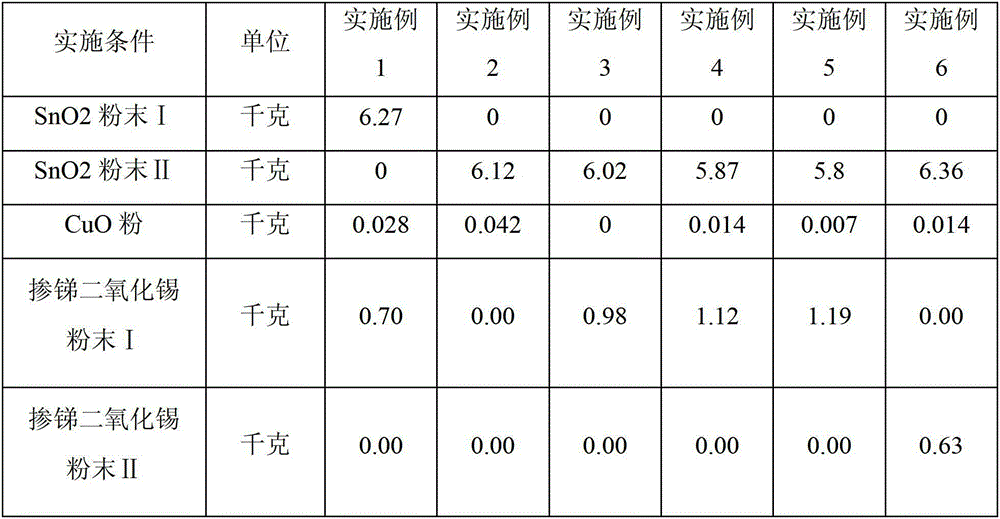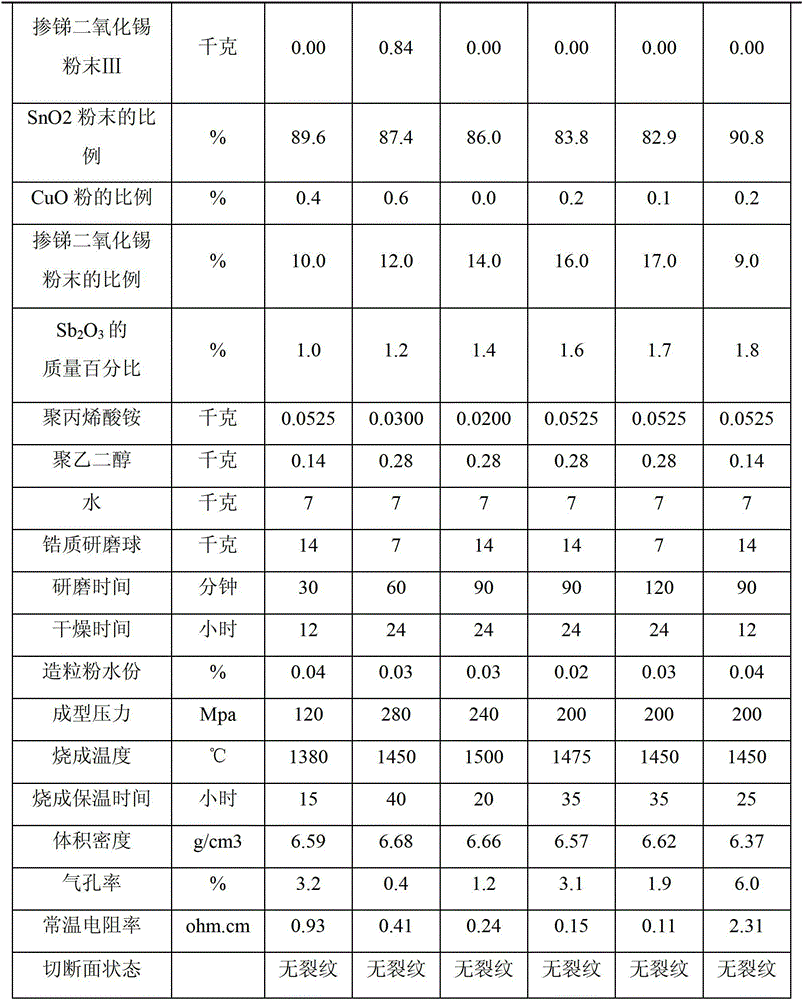Preparation method of stannic oxide ceramic electrode
A technology of tin dioxide and ceramic electrodes, which is applied in the field of ceramics to achieve the effects of reducing the tendency of deformation and cracking, improving corrosion resistance, and low resistivity at room temperature
- Summary
- Abstract
- Description
- Claims
- Application Information
AI Technical Summary
Problems solved by technology
Method used
Image
Examples
Embodiment 1
[0032] Ingredients: SnO 2 Powder, nano antimony-doped tin dioxide powder, CuO powder, chemical composition and particle size of binder and dispersant are shown in Table 1 below. Wherein the binder is an aqueous solution of polyvinyl alcohol with a concentration of 6%, and the dispersant is an aqueous solution of ammonium polyacrylate with a concentration of 30%.
[0033] Preparation steps:
[0034] Weigh SnO with particle size ≤ 20um in proportion 2 Powder, particle size ≤ 20nm, containing Sb 2 o 3 It is 10% nano-antimony-doped tin dioxide powder and CuO powder with a particle size of ≤5um, which is loaded into a polyurethane-lined ball mill. Then according to the ingredients: binder: dispersant is 1:0.02:0.0075, put it into the ball mill, add water according to the mass ratio of zirconia balls: ingredients: water is 2:1:1, put in zirconia balls, and grind for 30 minutes .
[0035] Pour the uniformly mixed slurry into a container, dry at 110°C for 12 hours, and crush it ...
Embodiment 2-6
[0040] Examples 2-6 adopt the same operation steps as in Example 1, changing the types of raw materials, proportion of ingredients, isostatic pressure and sintering temperature and other conditions. The specific examples and test data are shown in Table 2.
[0041] Table 1. Types and specifications of raw materials
[0042] raw material name
Raw material specification
Maximum particle size
SnO 2 Powder Ⅰ
SnO 2
20um
SnO 2 Powder II
SnO 2
10um
CuO powder
CuO≥99.0%
5um
Nano antimony doped tin dioxide powder Ⅰ
SnO 2 : Sb 2 o 3 =90:10
20nm
Nano antimony doped tin dioxide powder Ⅱ
SnO 2 : Sb 2 o 3 =80:20
30nm
Nano antimony doped tin dioxide powder Ⅲ
SnO 2 : Sb 2 o 3 =90:10
40nm
ammonium polyacrylate
30% aqueous solution
/
Grade 1799, 6% aqueous solution
/
[0043] Table two, embodiment and dete...
PUM
| Property | Measurement | Unit |
|---|---|---|
| particle size | aaaaa | aaaaa |
| density | aaaaa | aaaaa |
| purity | aaaaa | aaaaa |
Abstract
Description
Claims
Application Information
 Login to View More
Login to View More - R&D
- Intellectual Property
- Life Sciences
- Materials
- Tech Scout
- Unparalleled Data Quality
- Higher Quality Content
- 60% Fewer Hallucinations
Browse by: Latest US Patents, China's latest patents, Technical Efficacy Thesaurus, Application Domain, Technology Topic, Popular Technical Reports.
© 2025 PatSnap. All rights reserved.Legal|Privacy policy|Modern Slavery Act Transparency Statement|Sitemap|About US| Contact US: help@patsnap.com


